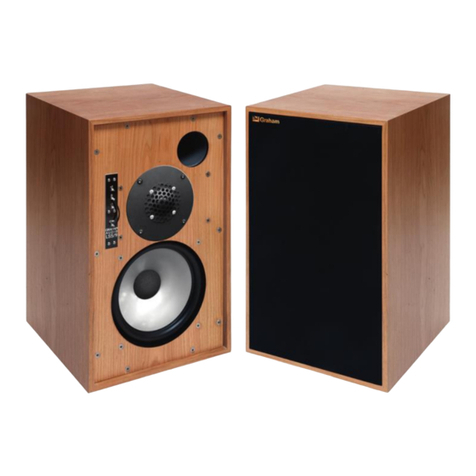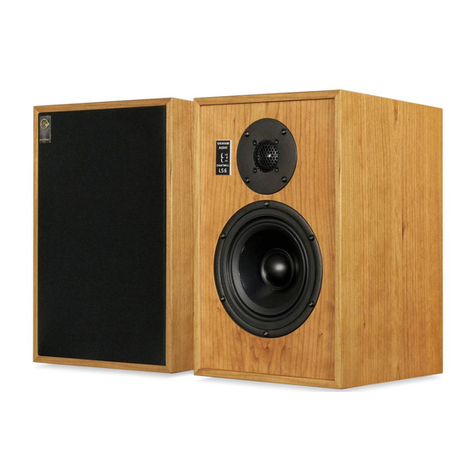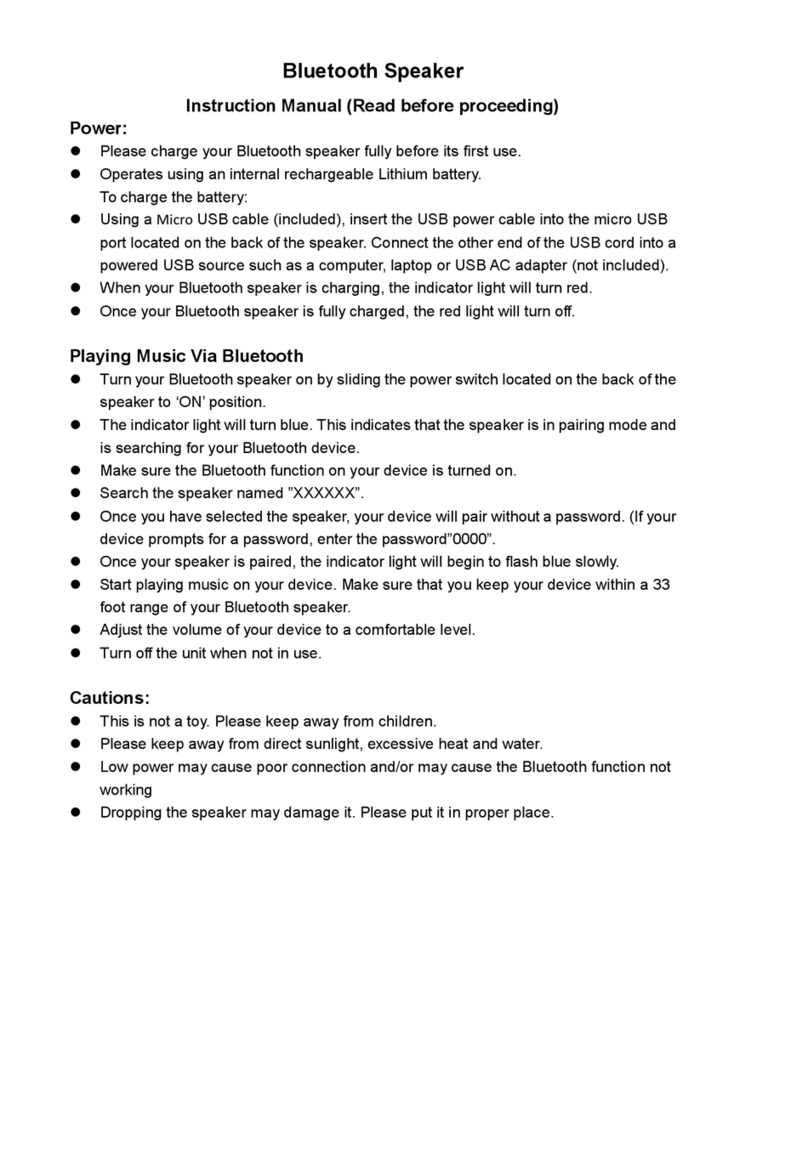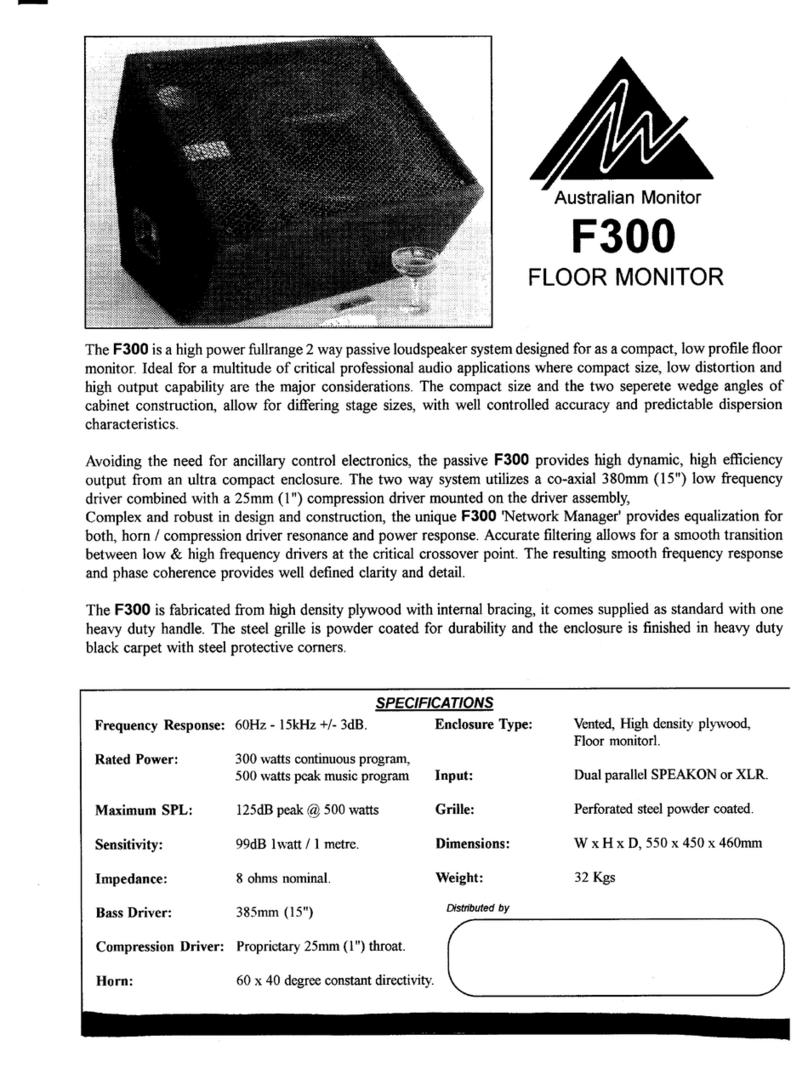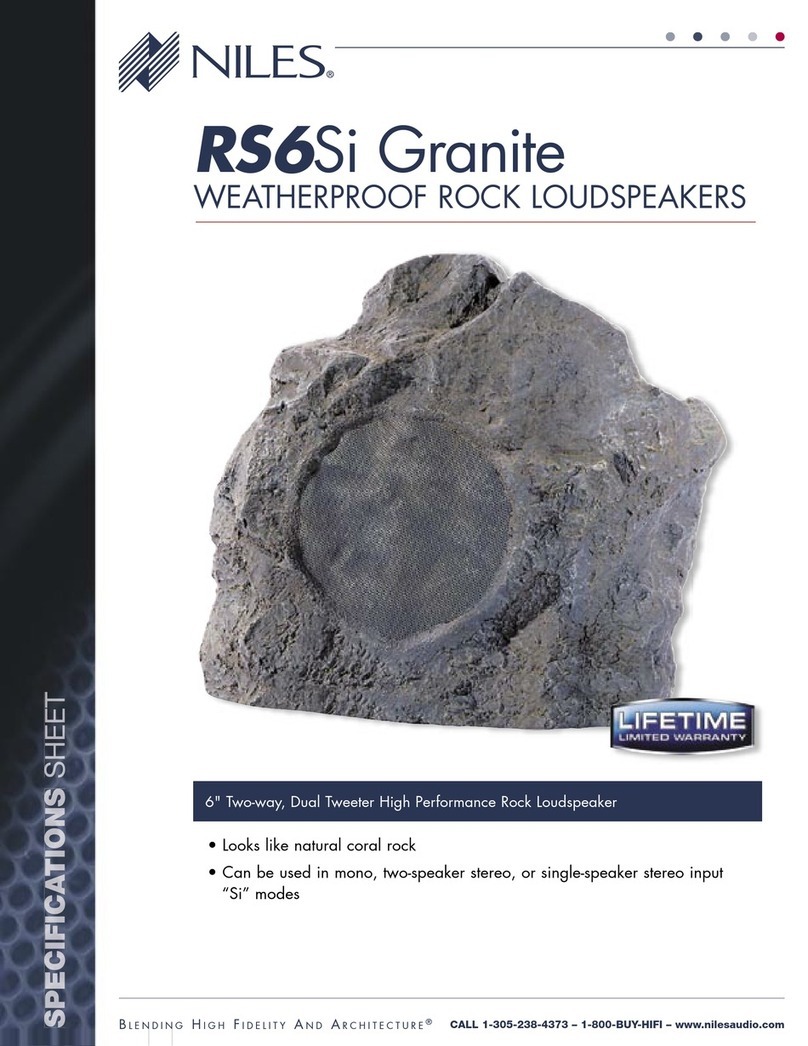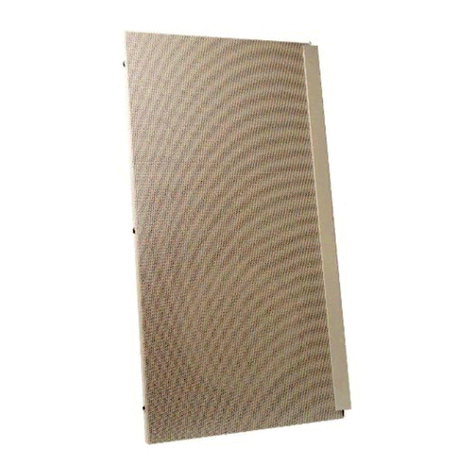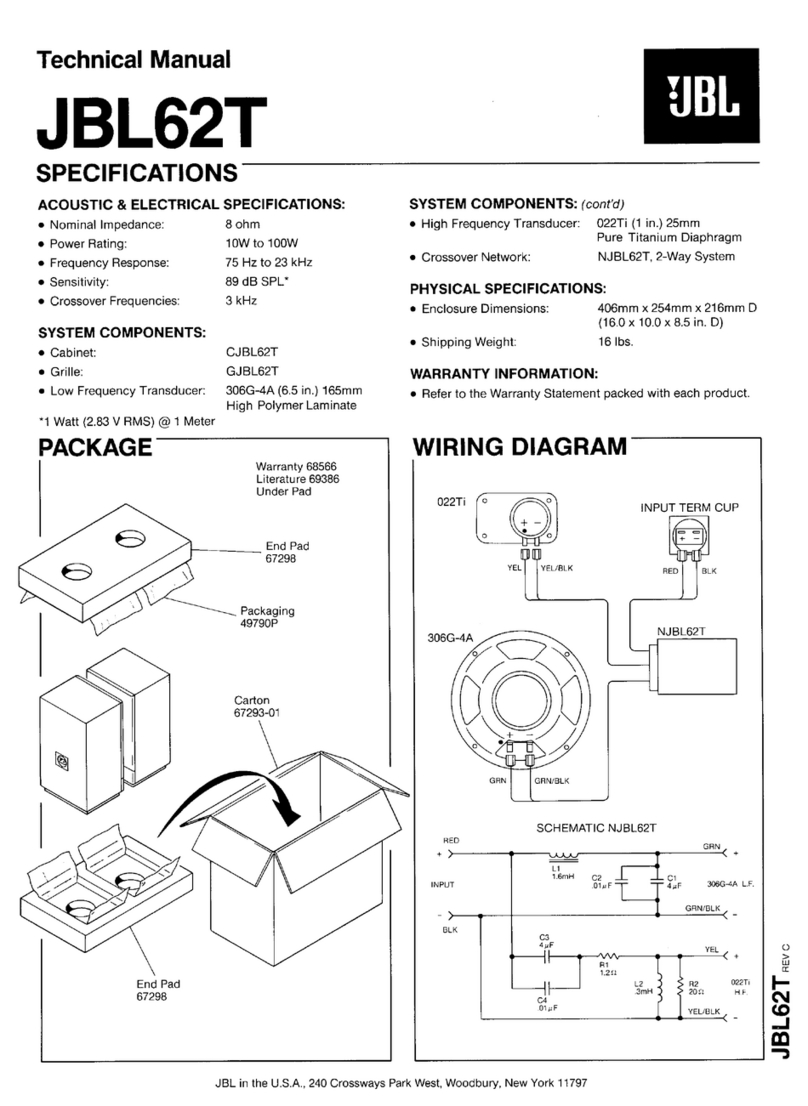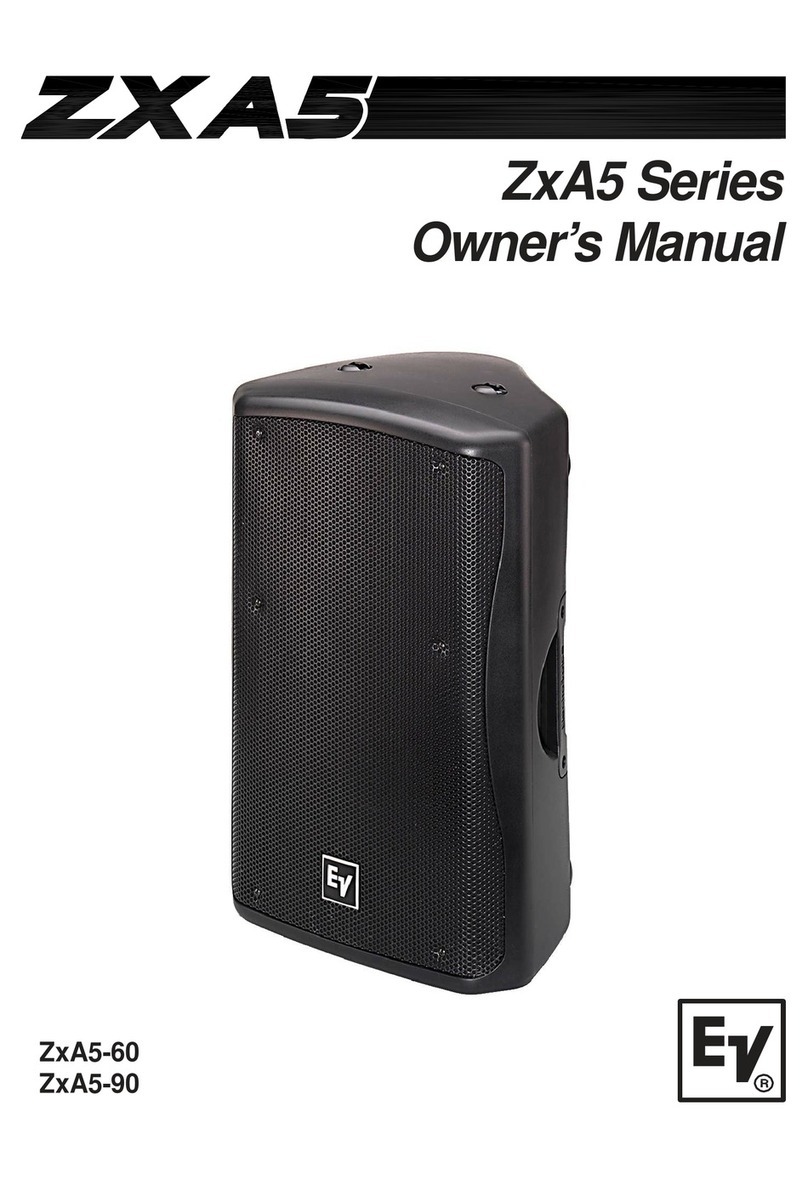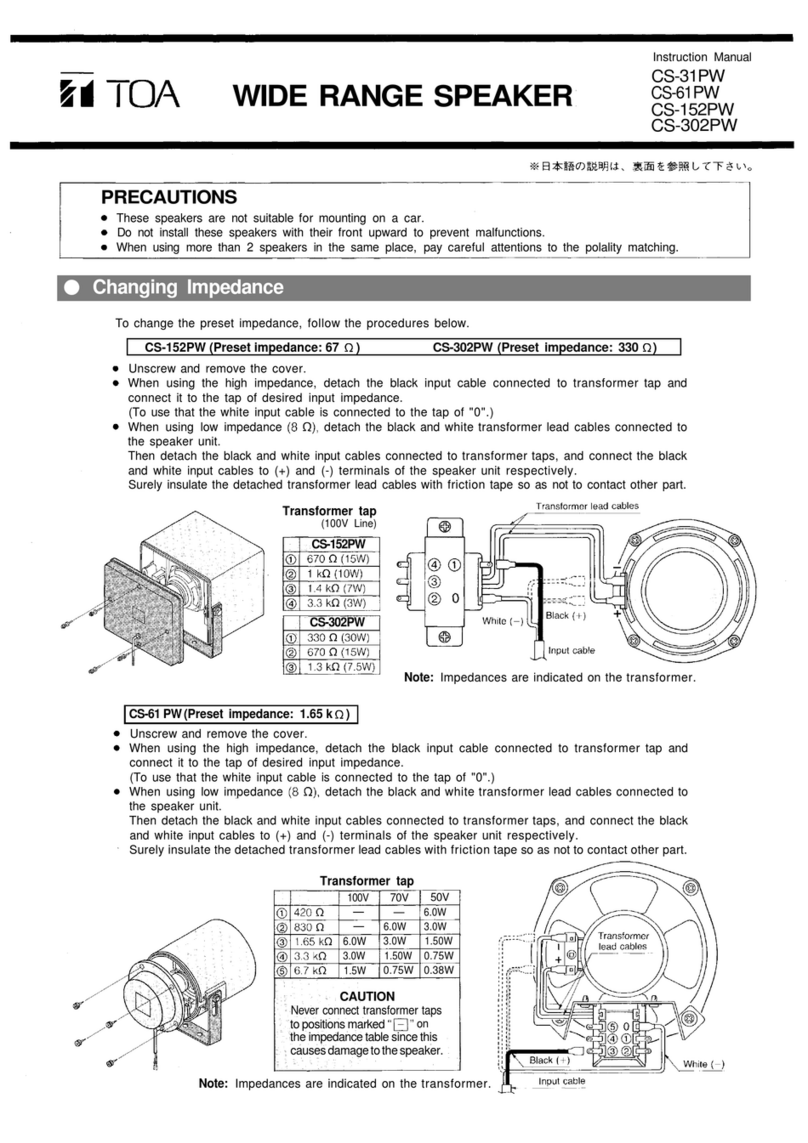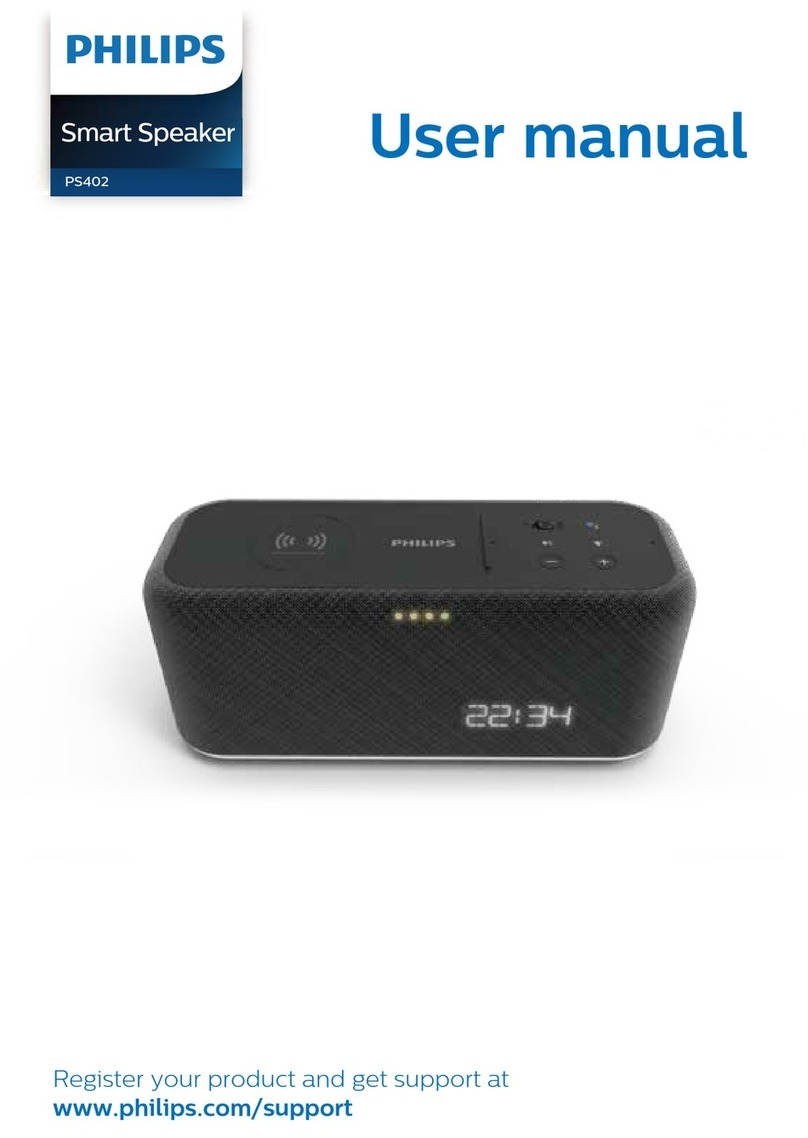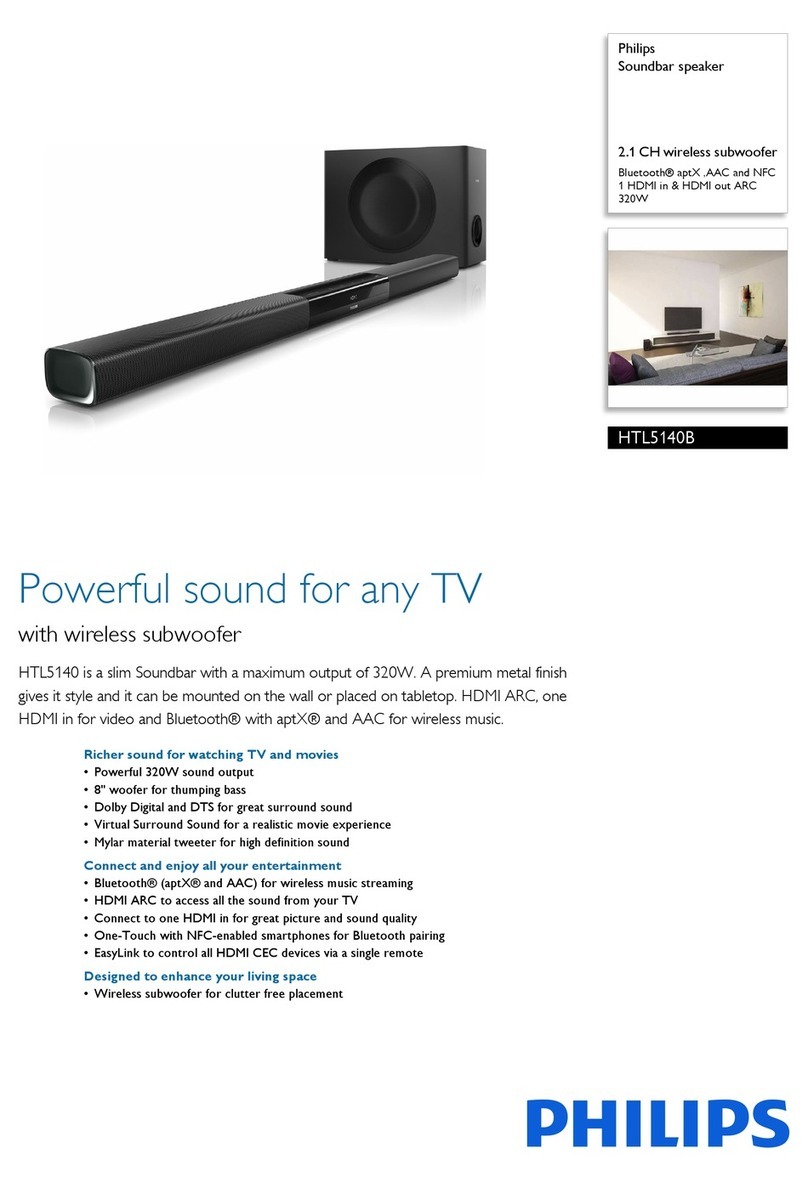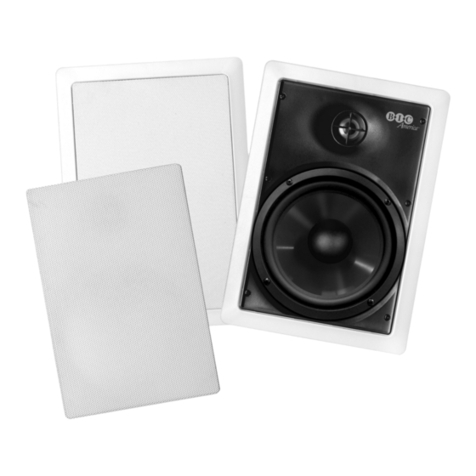Graham Audio LS5/9 User manual

Thank you for purchasing this loudspeaker
system from Graham Audio.
These loudspeakers have been carefully
crafted using the finest materials according
to strict BBC specifications and will provide
many years of listening enjoyment.
or the best results, please spend a few
minutes reading these instructions before
setting up your new loudspeakers.
LS5/9 Overview
The LS5/9 is a high quality monitor loudspeaker originally developed by the BBC for studio use.
The Graham Audio LS5/9 has been developed using modern components and production techniques to
provide a result that is an extremely close match to the original BBC R&D prototype.
Drive units
The 200mm bass/midrange drive unit is the result of collaboration between Graham Audio and Volt
and matches the original BBC LS2/14 as closely as possible in behaviour while avoiding the
longevity problems of the original unit. The 34mm tweeter is the latest version of the unit originally
used by the BBC. Each example is measured and graded accordingly. Like the originals, it is fitted
with a protective metal grille.
Enclosure
The cabinet is built using high quality 9mm birch plywood panels, which are lap-jointed and
damped using oil-free pads. Air damping is facilitated by 30mm slabs of high density Rockwool,
retained with cloth. or maximum serviceability, the baffle is readily removable for access to the
drive units and crossover. All fixings are stainless steel for maximum corrosion resistance. The cloth
grille is retained with concealed rare-earth magnets. The whole cabinet, including the baffle, is
covered using hand-matched sheets of real wood veneer.
Crossover
The result of extensive development, the crossover is responsible for dividing the audio spectrum
between the two drive units, and for equalising the response to match the original BBC R&D
specification. High quality parts are used, including premium grade polypropylene capacitors. A
tapped auto-transformer provides the bulk of the level equalisation between the woofer and the
tweeter. ine-tuning is provided and each assembled loudspeaker is measured and adjusted
individually before the final check and despatch.
MONITOR LOUDSPEAKERS
BBC LICENSED
AUDIO
ENGLISH HIGH FIDELITY
OWNERS MANUAL

Positioning your loudspeakers
The LS5/9 design is intended to be mounted on stands that bring the tweeter to ear level.
Typically, in most domestic settings, this will require a stand that is appro imately 40 to 50
centimetres high; in a professional environment, taller stands are typically required. The stands
should be rigid and non-resonant. Test metal stands with hollow upright sections by rapping them
with a knuckle, and consider filling them with dry sand or similar to eliminate any ringing.
For safety reasons, please ensure that the top surface of the stand is of similar dimensions to the
loudspeaker. There are many options for the interface between the bottom of the loudspeaker
and the top of the stand; small spikes are often supplied with the stand, but these will damage
the veneer. Reusable adhesives such as "Blu-Tack" are often recommended, but these can also
damage the finish of the loudspeaker. Small pads made from foam, felt or cork will provide the
most protection to the bottom surface of the loudspeakers. Between the bottom of the stands and
the floor, spikes are recommended for carpeted floors. These must be carefully adjusted to ensure
that the stand is absolutely stable, and they should be periodically re-checked as they can work
loose. For other floor finishes, spikes might not be appropriate; your dealer will be able to advise.
As is normal, determining the optimum position for your loudspeakers in your listening room
should be the subject of some e perimentation. As a starting point, try positioning them such that
you and the two loudspeakers should form an equilateral triangle. If possible, try to keep them
away from side walls, as reflections from these might affect the stereo image. Remember also
that the distance between the loudspeakers and the rear wall will have an effect on the bass level
and quality. In a rectangular room, you can typically e pect best results from pointing the
loudspeakers across the narrow dimension of the room, but every room is different, and there are
no firm rules! The loudspeakers should be angled in to face you, but again, this can be varied
according to taste.
Nearly every listening room can be improved with acoustic treatment. A thick carpet (or large rug)
is recommended, as reflections from hard floors are always detrimental. Large e panses of bare
walls can be similarly problematic and reflections from these can be treated with absorbing
materials or diffused with irregular surfaces such as bookcases. In the professional environment,
acoustic treatment is the norm.
LS5/9 RIGHT
LS5/9 LEFT
EQ ILATERAL
TRIANGLE
OPTIM M
LISTENING
POSITION
50 cm

Connecting up your loudspeakers
Please ensure that the cables are long enough to be neatly dropped down behind the stand at all
times, avoid Ôtrip hazardsÕ. Always switch off the amplifier when connecting up the loudspeakers.
or best results, we recommend that you use stranded cable with a cross-sectional area of
2.5 mm, the majority of 79-strand cables should meet that specification. Remember that some
specialist loudspeaker cables can have unusual electrical characteristics that adversely affect the
operation of some amplifier-loudspeaker combinations, so seek advice from your dealer
if in any doubt.
There is a single pair of terminals on the rear of the loudspeaker, and these can accept bare wire,
spade connectors, or 4mm plugs. The latter is recommended for convenience and connection
quality. Take extra care if using bare wire, as many amplifiers can be damaged by a short circuit,
even a momentary one.
The terminals are colour-coded red and black, and it is extremely important that the red terminal
of your amplifier is connected to the red terminal of the loudspeaker. Likewise for the black
terminals. If the bass seems weak, and/or the stereo image is indistinct, check that both loudspeakers
are connected to the amplifier with the same polarity.
Listening recommendations
Your Graham Audio loudspeakers are extremely revealing of problems in the preceding audio
chain, and should be partnered with high quality equipment. In particular, low powered amplifiers
driven into clipping will sound especially poor with any high quality monitor loudspeaker; with the
LS5/9, it is recommended to use an amplifier with no less than 50 watts per channel in a small
listening room, and those with larger rooms, or professional users, should use at least
100 watts per channel.
The loudspeakers were voiced with the grille in place and it is recommended that the grille be
left in place during critical use. The grille can readily be removed if desired; it is retained using
rare-earth magnets embedded in the grille frame and elegantly hidden beneath the veneer on the
front panel. Behind the grille is a tweeter level adjustment facility, which is designed to account
for minor variations in sensitivity of the two drive units. This has been accurately set at the factory,
and will not need adjusting during the life of the loudspeaker. In the unlikely event of drive unit
failure, the loudspeaker should be returned to Graham Audio for repair and calibration.
Caring for your loudspeakers
The high quality wood veneer should be cleaned regularly with a soft clean cloth. If required, the
cloth can be slightly damp. Avoid wax-based furniture polishes and all forms of solvents.
Remove the grille before cleaning the cloth with a soft brush. Like any wooden item, the loudspeakers
should be placed in a dry environment, away from sources of heat and out of direct sunlight.
Avoid touching the diaphragms of the drive units.
Graham Audio Tel : 0044(0) 626 36 68 email: [email protected] www.grahamaudio.co.uk
Table of contents
Other Graham Audio Speakers manuals

